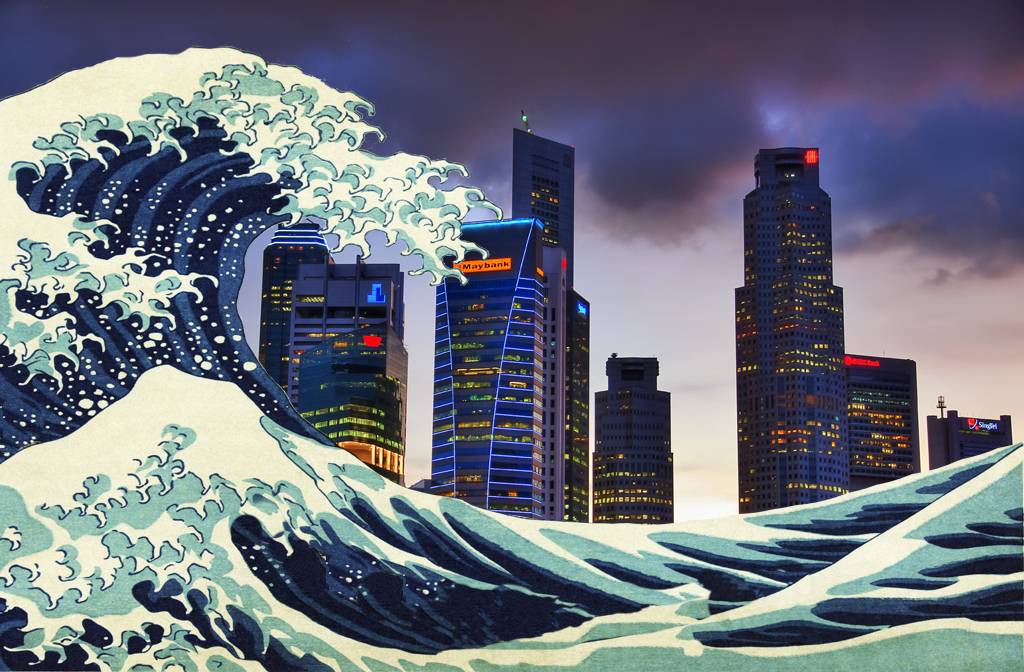Story by Juliette Yu-Ming Lizeray
— “Do you want sambal stingray? I’ll go order.”
— “OK. I’ll get us drinks. Chope the seats!”
Suddenly, the wailing of sirens pierces through the rambunctious chatter of the lunch crowd and the clatter of cutlery on plastic plates. “What was that?!,” the man at the next-door table says, staring at the sky. The sirens have a more urgent ring now, and people are running left and right, toppling over their bak chor mee and Milo dinosaurs. Then there is a flash and a loud boom which rattles the hawker centre. Then another. Then one more… much, much closer.
There is a mushroom cloud in the distance.
Would you be ready if when disaster strikes?
Tim Leong (not his real name) is. He is a “prepper” — someone who is actively preparing him or herself for any possible doomsday, or, as preppers say, for “when SHTF” (shit hits the fan). This 32-year-old man, a membership executive at the Singaporean Red Cross Society, says he goes everywhere with a “bug out bag” (BOB) filled with basic survival supplies to last him a few days in the wild.
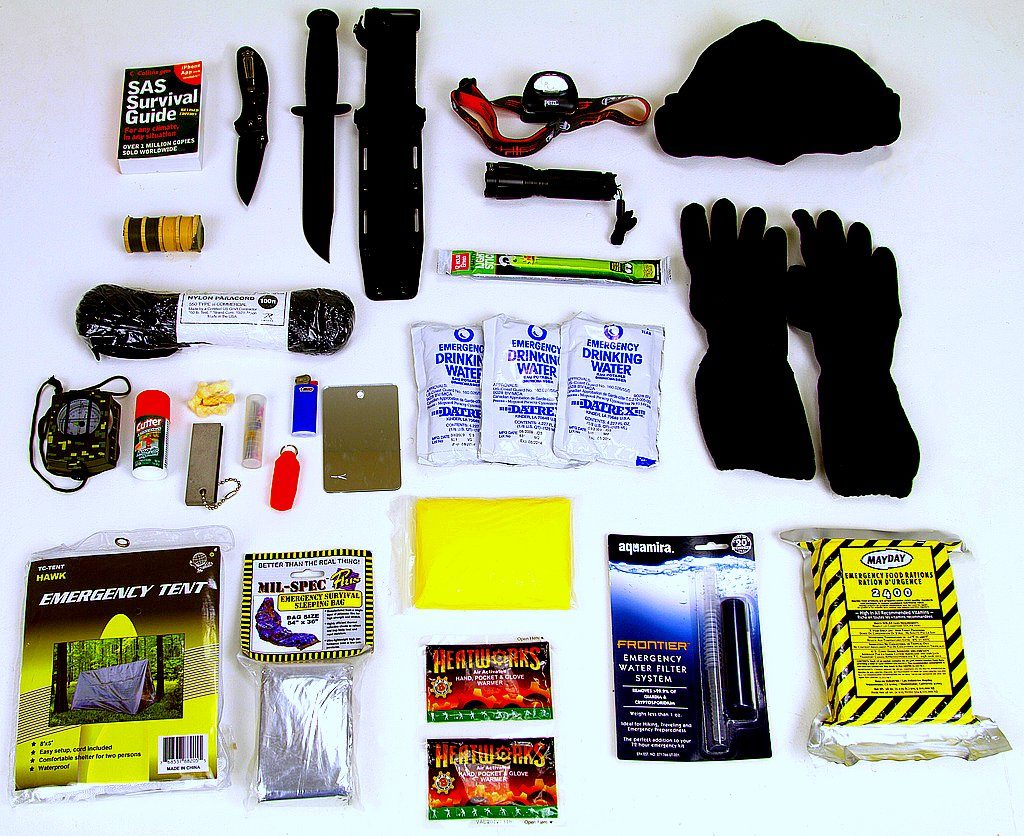
Tim is one of the first “new wave” of preppers in Singapore, made up essentially of Gen Xers and Millennials who have not experienced war or periods of great hardship. Back in Singapore’s third-world village days or during the Japanese occupation, when life was tough, having enough supplies to last weeks, even months, and growing one’s own food was not trendy. It was a necessity.
Today, we are completely dependent on stores, the power grid, clean tap water, cars, smartphones, and doctors. Everything we need, we buy. We don’t know how to grow food, change a tire, grind our coffee, let alone start a fire without a lighter, or stitch a gaping wound. (I personally, would be one of the first to die off if I ever got lost in a jungle.)
But, in our midst, are a few individuals who are determined to survive in a post-apocalyptic world where NTUC Fairprice, SMRT cabs, and NEWater treatment plants are no longer. Meet the men and women (but mostly men, lah) who are our nation’s very own Doomsday Preppers.
Meet the preppers
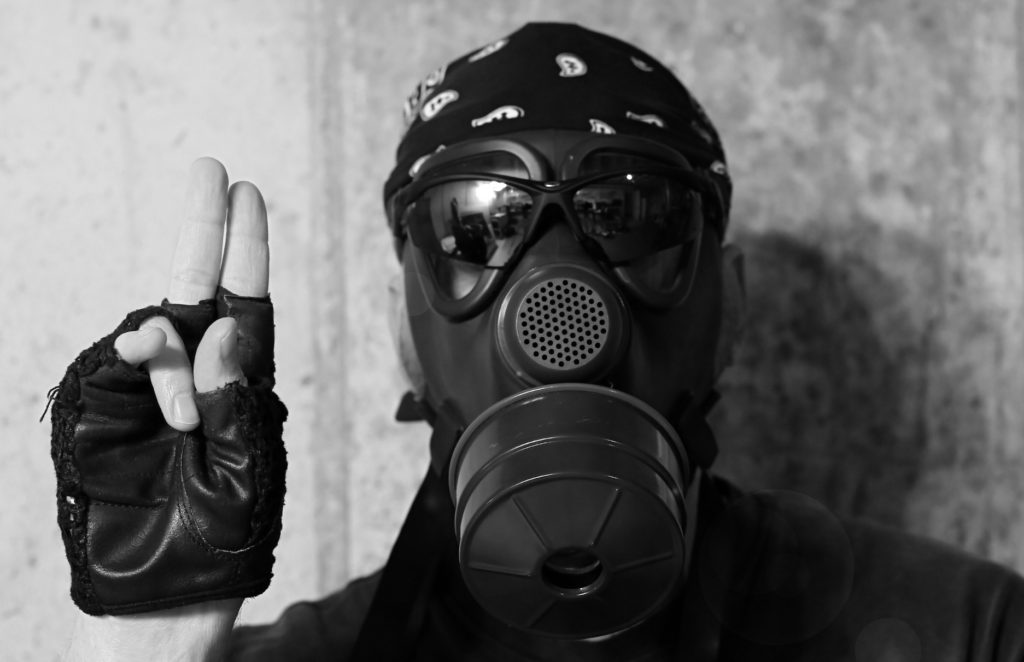
Tim has been a prepper since 2004. A fellow volunteer in the Community First Aid Programme (by the Red Cross) once showed him his “everyday carry” — a bag filled with prepping gear for every imaginable disaster. He became hooked.
He has since spent several hundred to several thousand of dollars per year on equipment, food, water filtration, power and medical supplies.
The reason he doesn’t want to reveal his true identity is because he, like many other local preppers I spoke to, fears becoming a target in a potentially lawless future, one in which marauders would try to steal their supplies.
Wherever he goes, he carries a solar powered charger (so he can always be contactable to friends and family), and a lighter (to start a fire — he doesn’t smoke). Both his home and office boast a well-supplied pantry designed to last him weeks, along with plenty of first aid kits. Tim is also first aid certified, something he admirably believes everyone, not just preppers, should be.
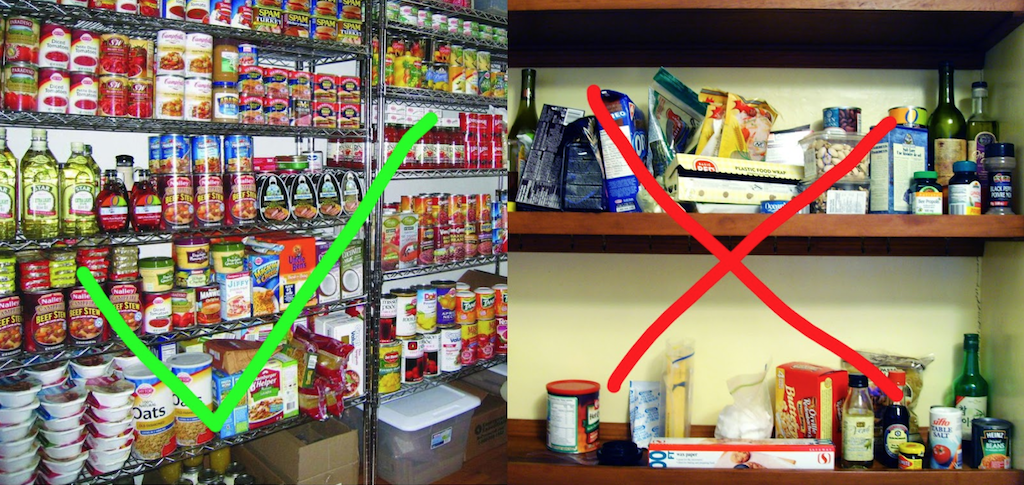
“Being just a red dot located near the equator, many man-made scenarios are likely to affect Singapore,” Tim says, listing out the possible risks, “Power grid attacks, cyber warfare, multiple isolated bombing incidents, or dirty bomb release at a national-level event, or even an intercontinental ballistic missile attack.”
Movies like Deep Impact, Olympus Has Fallen and even the Steve Carrell comedy Evan Almighty indirectly influenced his prepping journey. (Incidentally, if Tim had to choose one famous person to share a bunker with for the rest of times, he’d choose… you guessed it! Morgan Freeman.)
If one day he is able to afford it, Tim dreams of owning a plot of land in Malaysia, surrounded by high walls, where he can live sustainably by growing his own food and having his own energy supply. But should disaster strike before then, he would either try and join relatives in Australia (if air travel is still possible), or take a boat to Batam (he believes everyone would flee by land).
“Hope for the best, prepare for the worst,” is Tim’s motto. That means mentally preparing to never eat his favorite dish again: Singapore Chili Crab.
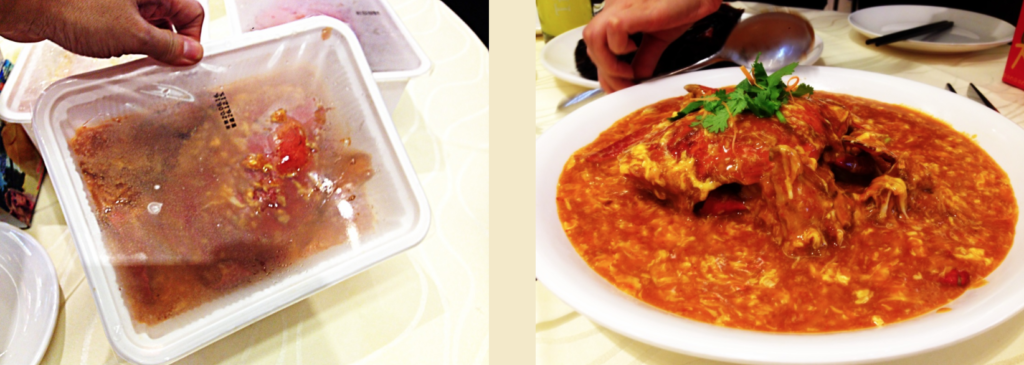
Cole Lee, a 29-year-old Singaporean aircraft maintenance planner, first came across the term “prepper” online a couple of years ago, and it immediately struck a chord. Here was a way to overcome the feeling of insecurity associated with being at the mercy of events that are out of one’s control. He names domestic terrorist attacks, a water supply crisis and a food supply crisis as his top three doomsday fears.
“It sort of resonated with me that I did not want to be unprepared for whatever things that may happen,” he shares.
Cole’s doomsday prep is intensely focused on stockpiling food and supplies that can last him a few weeks. Prepping to him and his girlfriend (also an avid prepper) is a lifestyle — one that, he admits, can get pretty expensive here in Singapore.
During his mandatory two-year stint doing National Service, Cole was “deployed outfield” which taught him which gear he needs to survive in the wild as well as how to fire most of the SAF’s infantry weapons. But he notes that “living out in the field with your buddies under the SAF is quite different from having to go at it alone” because soldiers’ food, water, and other supplies are transported by a logistics team that accompanies the unit.
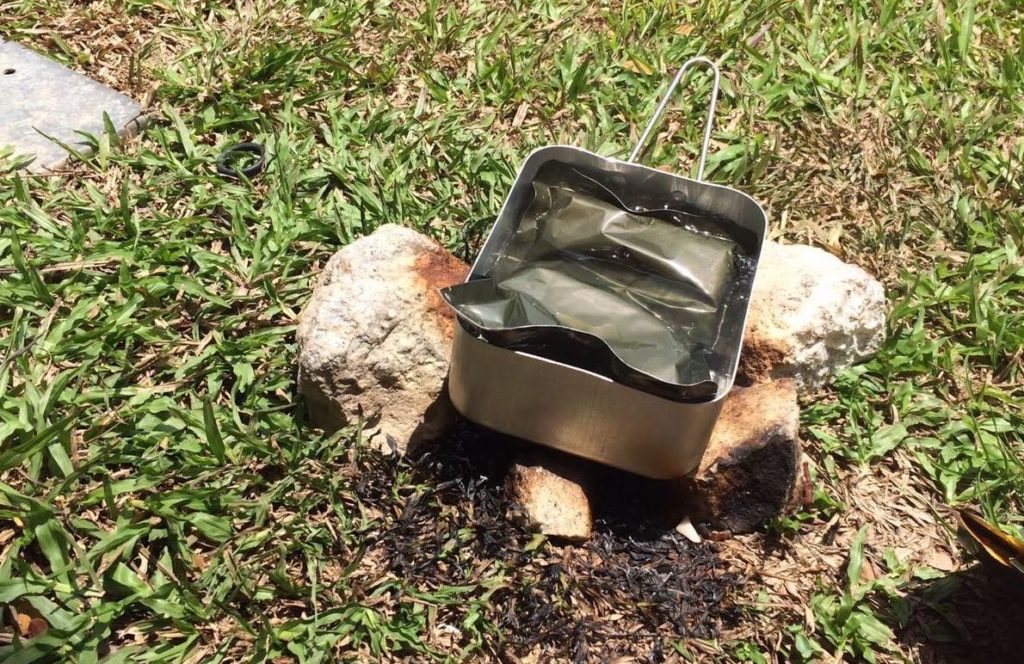
Cole’s military training has influenced his “bug out” strategy when SHTF. He says he’d head to the nearest army camp, as it is “the best place to scavenge for arms and ammunition to protect myself and my family.”
Since he fears Malaysia may cut off Singapore’s water supply at any moment, Cole keeps a stash of water purification tablets and various water filtration systems, as well as several gallons of water. Like Tim, he knows basic first aid, and stocks plenty of medical supplies, lots of food including combat rations (Meals Ready to Eat), multiple sources of cooking/heating fuel, and a collection of folding knives (“there’s no end to what a good knife can do for you,” he philosophizes.)
Cole admits his mother and sister hardly share his prepping fervor.
“They think I’m crazy,” he shares, attributing their attitude to living a sheltered life oblivious to Singapore’s vulnerabilities, and lacking experience roughing it “out in the field.”
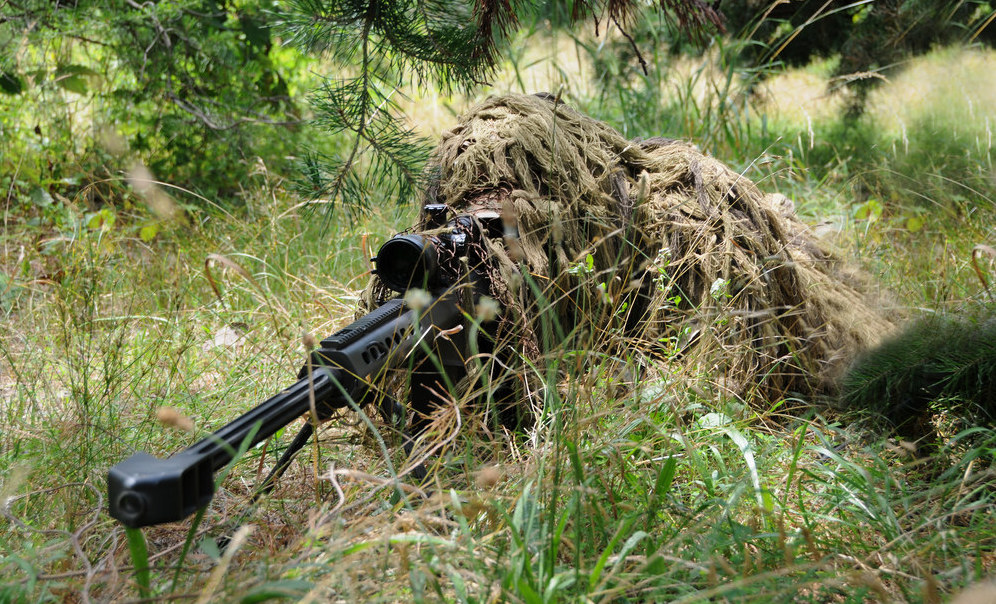
Wider community of preppers
Today the prepper community in Singapore is a loose constellation of like-minded souls who are largely acting individually to prep for disaster. They connect with other preppers at home and abroad through various internet forums (the main ones in Singapore are on Hardwarezone). Discussions range from which doomsday scenarios to prep for, and sharing where to buy supplies, to which brands of Meals Ready to Eat have the least gross taste. Not surprisingly, much space in the Singapore forums is dedicated to the topic of food.
Local preppers come in all ages. The youngest self-proclaimed prepper I came across was a 14-year-old boy. He said he began to worry about the end of the world after playing zombie apocalypse video games. One 16-year-old “prepper” told me he had bought tools to pick locks in order to find a place to hide during martial law — he noted he has assiduously avoided trying them out because of CCTV cameras.
Singapore doesn’t have local businesses that cater specifically to prepping for the apocalypse, so local preppers buy what they can from army supply stores like Black Tactical, supermarkets and pharmacies. They buy more obscure survivalist gear on eBay or get creative in their hacks.

In 2016, Singapore’s first “Urban Survival Prepper Meetup” group was formed. Its organizer, Stephen Siew, hopes to build a community of people who can share and develop their survival skills together. Stephen believes that “the art of survival involves communities and like-minded individuals.” After all, no one can survive alone. Today, the Meetup counts 67 members, and covers a vast range of topics from “Agriculture after Armageddon” and “Rebuilding Society post-Armageddon” to “Social and Psychological Impacts pre- and post-Armageddon.”
In anticipation of their late February 2018 Meetup, he posted an eye-catching message alluding to the recent Hawaii false alarm:
“2010 – 2115 “BALLISTIC MISSILE THREAT INBOUND TO SINGAPORE. SEEK IMMEDIATE SHELTER. THIS IS NOT A DRILL” — Are you prepared? What are you going to do immediately if you have only 10 mins to be in a shelter?”
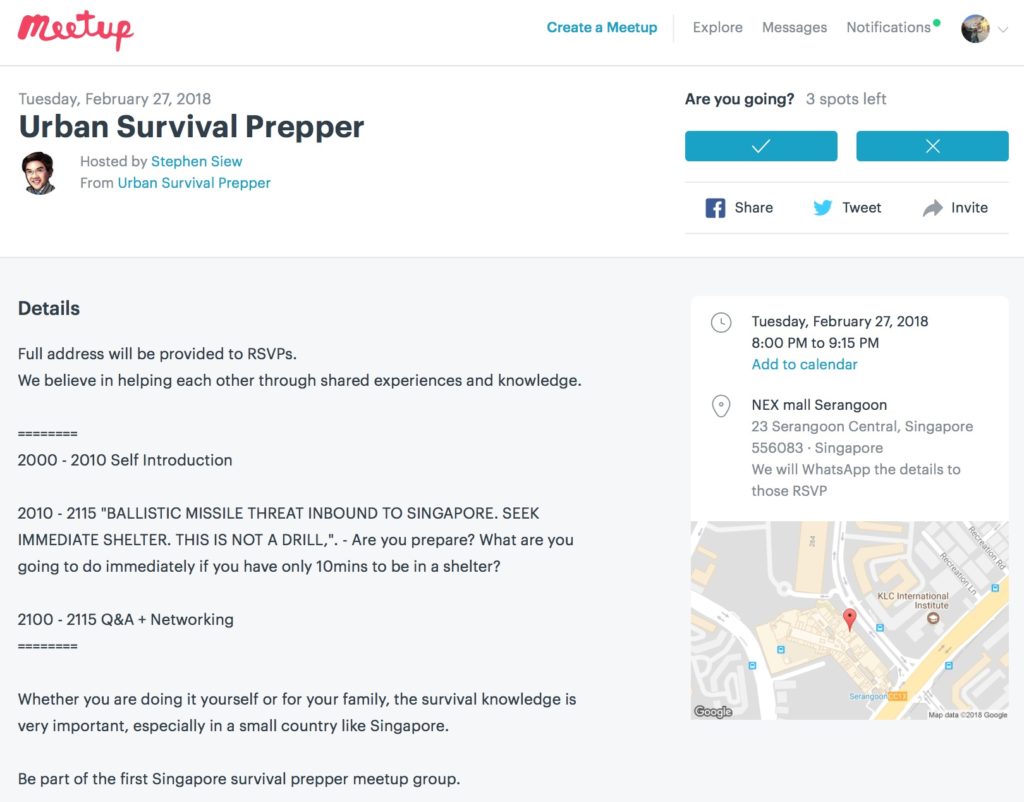
Singapore’s vulnerabilities
Singapore is particularly vulnerable in times of doom because it is tiny, land-scarce, highly import-dependent for both food and water. If the city-state is destroyed or under attack, there is no countryside to escape to or grow crops.
Singapore still imports a large percentage of its water from Malaysia, though its NEWater and desalination plants are projected to make the country self-sufficient by 2061. Most of the food we eat is imported. Preppers like Cole believe any disruptions in the country’s water or food supply would drive up prices, cause panic, and potentially force people to flee.
Singaporean preppers are also relatively constrained in terms of how they can prep for doomsday. Most prepping know-how and resources come from the US — which has a long history of survivalist movements — and often involve people in rural areas where one can build home-fortresses and carry firearms.
Unless you want to barricade your HDB flat, there’s not much one can do in Singapore, except accumulate supplies at home and learn virtually by watching videos and reading online. Homegrown preppers also have no option of getting doomsday-proof missile silos on the island, unlike the US, where survivalist real estate is a thing.

A big part of prepper culture encourages weapons for self-defense when SHTF and rule of law presumably disappears. Some preppers argue that Singaporeans are less able to defend themselves in post-doom days because guns are illegal. Others say, who needs guns when you got parangs?
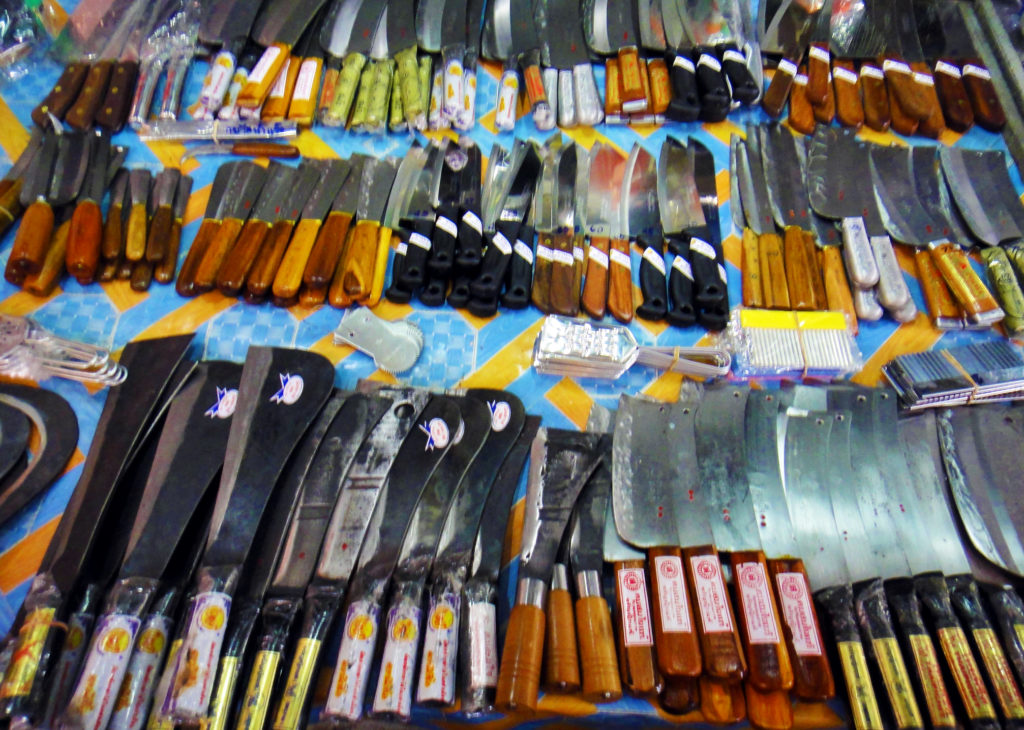
Many homegrown preppers affirm their fellow Singaporeans won’t be able to handle a disaster. In their opinion, Singaporeans downplay the need to resort to go-it-alone survivalism, because they either trust that the government will handle everything, or genuinely believe that it will never happen here. Plus, there’s now the SGSecure app, right?

However, Tim warns: “if we cannot even be situationally aware and alert to our surroundings in times of peace, we will not be able to pay attention to possible signs of a disaster being about to strike us.”
“Just look at how many walk around with their heads buried in their phones,” adds Cole. “How many would spot impending danger?”
Add to that the fact that Singapore has had “decades of peace” and “no natural disaster experience” which, preppers say, make it harder for Singaporeans to mentally consider dire possibilities.
“Many Singaporeans would die when something bad happens. But the ones that live on would be able to bring this country to greater heights,” Cole offers pointedly.
“That sounds cold, but that’s how Darwin works.”
Singaporean head start
Singapore, in many ways, has followed a path of development that is, in its own way, quite prepper-y. From the HDB bomb shelters (as well as public shelters in schools, community centers, and MRT stations) and the compulsory two years of National Service to the Ministry of Home Affair’s highly visible SGSecure campaigns and Community Emergency Preparedness Programme.

If one is to believe popular folklore, another potential asset is Singaporeans’ Kiasu (fear of losing), Kiasi (fear of dying) and Kiaboh (fear of having nothing) spirit(s) — 3 of the famous 5Ks. Surely these would make Singaporeans more predisposed to become preppers?
For our non-Singaporean readers, the other two Ks are Kiabor (fear of your wife), and Kiachenghu (fear of government), which may not necessarily contribute to disaster readiness. Though it’s good to keep in mind that your wife knows best at all times.
Now, what better fodder for the Kiasi, Kiasu and Kiaboh in all of us, than to contemplate some of the doomsday scenarios invoked by local preppers and their survival tips? Here we present the five most fascinating ones.
Global financial meltdown (‘SGX’s Worst Nightmare’)
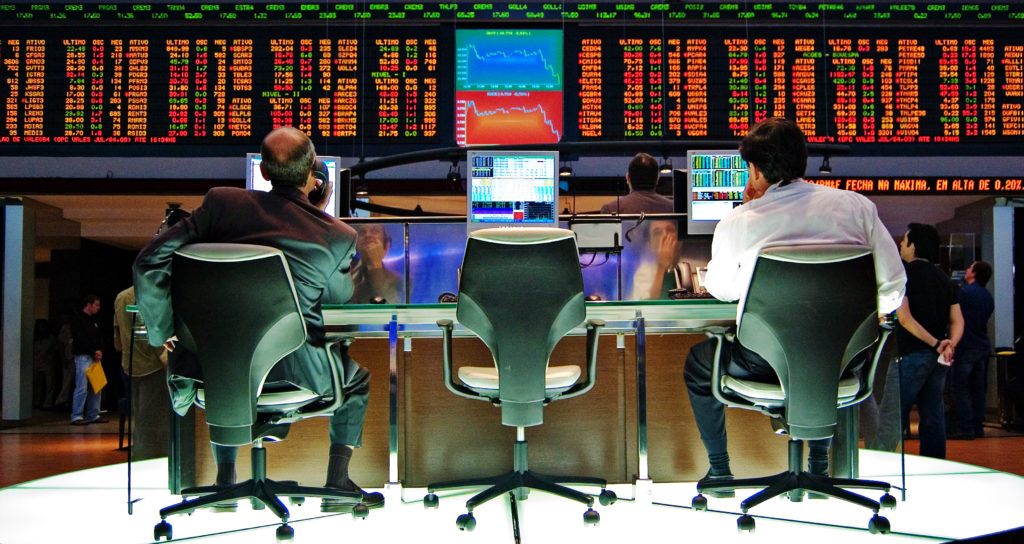
A USD, Yen or Euro collapse sends the value of the SGD plummeting faster than a mic drop. Massive hyperinflation follows and people resort to the ancient art of bartering. Gold may become the new default currency.
Since Singapore is so dependent on the global financial market, many lose their jobs and savings. (*Sound of tumbleweeds rolling through the CBD*). Civil unrest follows (the likes the Speakers’ Corner has never seen), with supermarkets and luxury retail stores looted.
Doomsday Prepper tips:
- Run to the bank and get all your money as soon as you hear of a currency like the USD or Euro devaluating rapidly (Ed: Runs on the bank can be a really bad thing. Proceed with caution).
- Keep some cash at home, or even convert it to hard assets like gold, while stockpiling items you can barter like liquor.
- Make sure your house is secure and protected, and that you have enough food for a few months.
- Grow food in underutilized spaces like window sills/balconies/rooftops.
- Give up on the Five Cs of Singapore (cash, car, credit card, condo, country club membership, FYI) and move to a kampong in Malaysia.
Seriousness: 2.5/5
Probability: 4.5/5
World War III (‘The Final Showdown’)
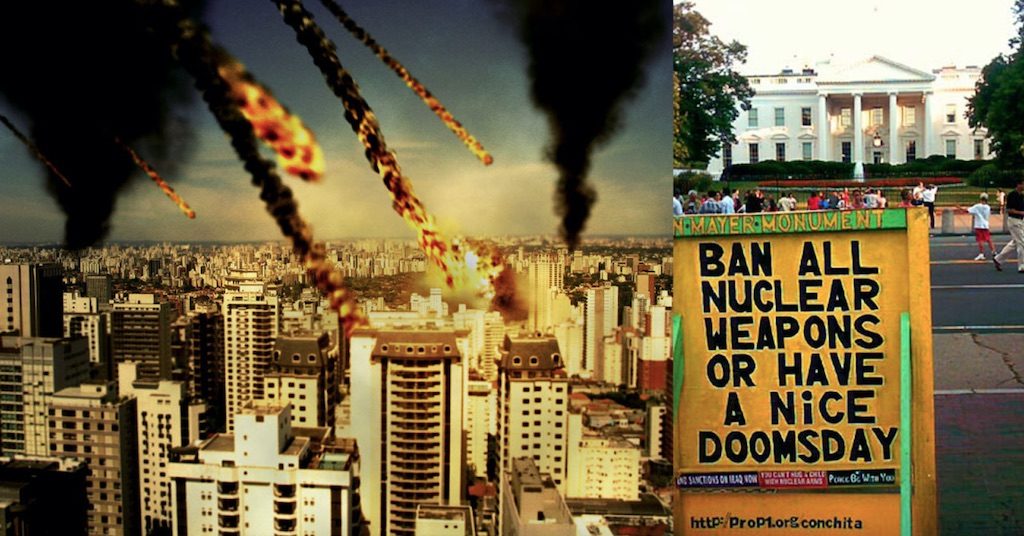
War involving superpowers and their allies, across most parts of the world.
No rules — anything is fair game (human rights, what?).
Very high probability of nuclear war (see North Korea vs. US, and the US vs. Iran). Today, 9 countries possess a total of 14,900 nuclear weapons (enough to wipe out humanity twice completely). Not to mention, the risk of non-state actors getting their hands on one is pretty high.
Singapore could be on the receiving end of radioactive fallout or be forced to take in waves of refugees fleeing conflict/radiation.
Our tiny speck of land may also be attacked and invaded in the ensuing chaos, as the global balance of power shifts and new entities challenge national boundaries (New Malaya? Pinoy Pacific Empire? The City Harvest Republic Of Benevolent Good?)
Doomsday prepper tips
- Preemptively move to a missile silo. (note: only for the hyper-wealthy among us).
- If you are rich, acutely kiasi, but don’t want to leave Singapore, build yourself a backyard bunker with reinforced concrete walls fitted with sheets of lead.
- Buy a hazmat suit that provides some short-term protection from the not-so-fantastic four: chemical, biological, radiological and nuclear materials. The most legit ones cost upwards of 3K
- Also, consider investing in a Self-Contained Breathing Apparatus (SCBA) which costs a sweet 10k (no point saving for your offspring’s tuition with the world ending).
- (Oh and, radioactivity hangs around for many years, decades, even centuries, so the fashion-conscious should consider getting hazmat suits in different colors)
Seriousness: 4/5
Probability: 4/5
Electronic Armageddon (‘Bo Smart, Phones’)

Caused by a cyber attack on the electrical grid, or an electromagnetic pulse (EMP) created by a nuke detonated in the atmosphere. Both would lead to a massive blackout, affecting electric power, water treatment, telecoms, financial systems, and transportation (traffic lights, petrol pumps, flights not working… though, not much change in terms of the MRT *ba dum tsh!*).
Doomsday prepper tips
- Fill your bathtub and sink with water, before the supply gets cut off or contaminated.
- ATM and credit cards will be useless, so bartering your belongings or skills (alcohol, cigarettes, mahjong sets are good for bartering).
- Get non-electric household devices (solar ovens, manual meat/grain/coffee grinders, wind-up flashlight/dildos…).
- Stock up on candles or oil lamps.
- Get walkie talkies for your friends and fam.
- Get a solar panel or gasoline generator. (Beware: these items will almost certainly make you a target, so don’t use them if they are conspicuous).
- It could take years to restore power, so learn to grow your own crops.
- You can save your electronics from an EMP by placing them in a microwave and sealing it up. It will function as a Faraday Cage, protecting its contents from electrical pulses.
Seriousness: 4/5
Probability: 4/5
Pandemics (‘Twelve Orang Utans’)
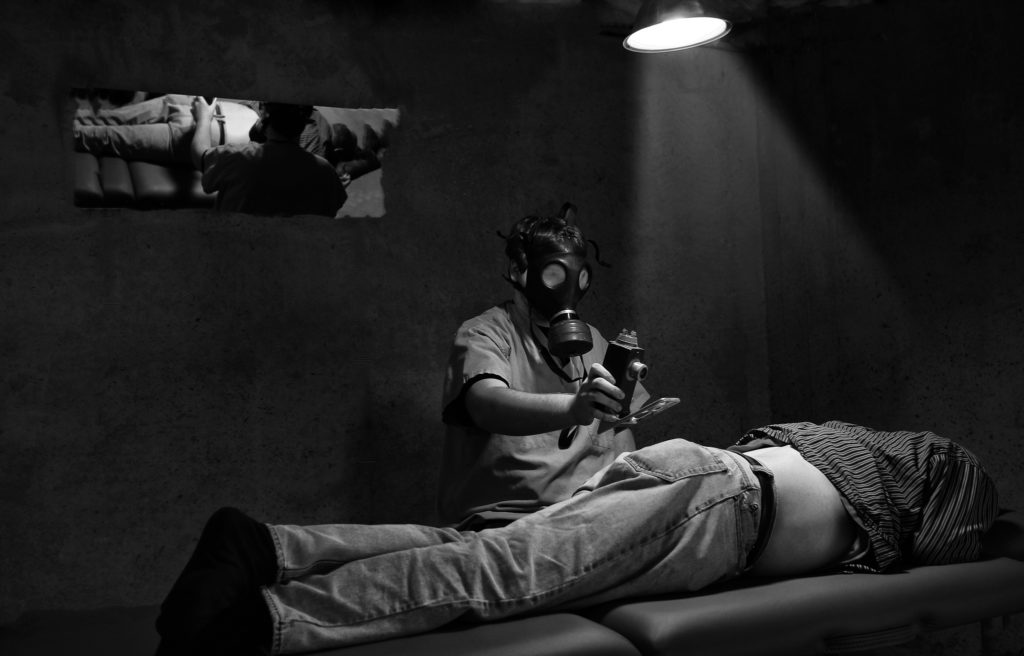
Diseases, like Ebola, MERS, Zika and swine/bird/Merlion flu (ahem), have proven to be deadly, spread very quickly, and affect a large number people in multiple countries. Singapore, being a global, densely populated hub, risks getting infected quickly.
Doomsday prepper tips
- Get a particulate respirator which filters out the baddies (like the N95 model).
- Use hand sanitizer like body lotion.
- Don’t shake hands and avoid people like the plague (literally).
- Go on a Staycation. At home. For months.
- Seal off windows and doorways (duct tape is your friend).
- Don’t play-play and wear a suit like this to go outside. If too shy or broke, at least wear a mask, goggles, and gloves (very stylo milo).
Seriousness: 4/5
Probability: 4/5
Alien Invasion (‘The Great Probe Forward’)

According to NASA, the odds of extraterrestrial life are very high, considering there are billions of habitable planets in our universe. There have been many alleged sightings of UFOs and actual aliens visiting our earthly abode. If little green dudes haven’t yet arrived, it’s just a question of time before more technologically-advanced aliens travel through wormholes or zip through the void faster than the speed of light, to respond in “person” to the friendly ‘is-anyone-out-there’ messages we’ve sent into space, right?
Doomsday prepper tips
- Worst SHTF scenario ever? Maybe. Much depends on the aliens’ dispositions and reasons for coming. They could be on an anthropological field-trip or scientific mission (armed with probes), be interested in our planet, or just had a craving for some Satay by the Bay. We may be seen as friends, pets, enemies or a cockroach-like nuisance.
- If the aliens have total planetary control, stay at home and watch Alien on repeat while sobbing.
- If your location is compromised, you will have to engage in some cardio, so get fit now. “Not that you will get far, you measly human sack of delicious organs muahahaha” [alien voice].
Seriousness: 0.1 (friendly) – 100/5 (not-so-friendly)
Probability: 0.05/5
Is prepping for you?
So would you be able to survive these doomsday scenarios?
No? Welcome to the club!
But before we all rush out to buy 10 dozen crates of Ayam brand sardines, remember that prepping takes lots of time, money and energy. And it’s an unending task (one is never 100% ready).
Also, statistically speaking, one is way more likely to die of cancer, or in a car crash. Yet, preppers don’t invest as much in preventing those things than in planning to survive Mad Max triple-OMG-doomsday scenarios.
I suppose no-one wants to be that guy/gal who gets CT scans and colonoscopies every six months, or the weirdo who refuses to use any vehicles and walks from Serangoon to Boon Lay, driven by the indomitable will to live. Still, if preppers apply the same survivalist urge to their health, they’d likely all be vegan and meditate two hours a day.
And while we’re on the subject, why are so few preppers concerned about man-made climate change, which scientists and governments around the world are calling the biggest threat to our way of life and planet? Our climactic Armageddon is all but certain if we continue on the path we’re going. It has a much higher probability of occurring than any other doomsday scenario. In fact, it’s already happening. Everywhere.
I suppose there is a certain allure to imagining the end of the world. The human mind is drawn to the sensational aspects of singular cataclysmic events rather than gradual, irreversible deterioration. There is an element of rugged manliness infused with Hollywood-inspired heroism of surviving against the odds and of being one against the world.
But, beyond the tales of doom and nihilism, lie some rather lucid and even poignant lessons: Not taking our way of life for granted, and expecting everything to always go as planned. Striving to become more self-reliant and energy-sufficient. Becoming less dependent on rampant consumerism.
That, to me, is the real wisdom.
And I can’t wait to change my first tire. On my bike.

